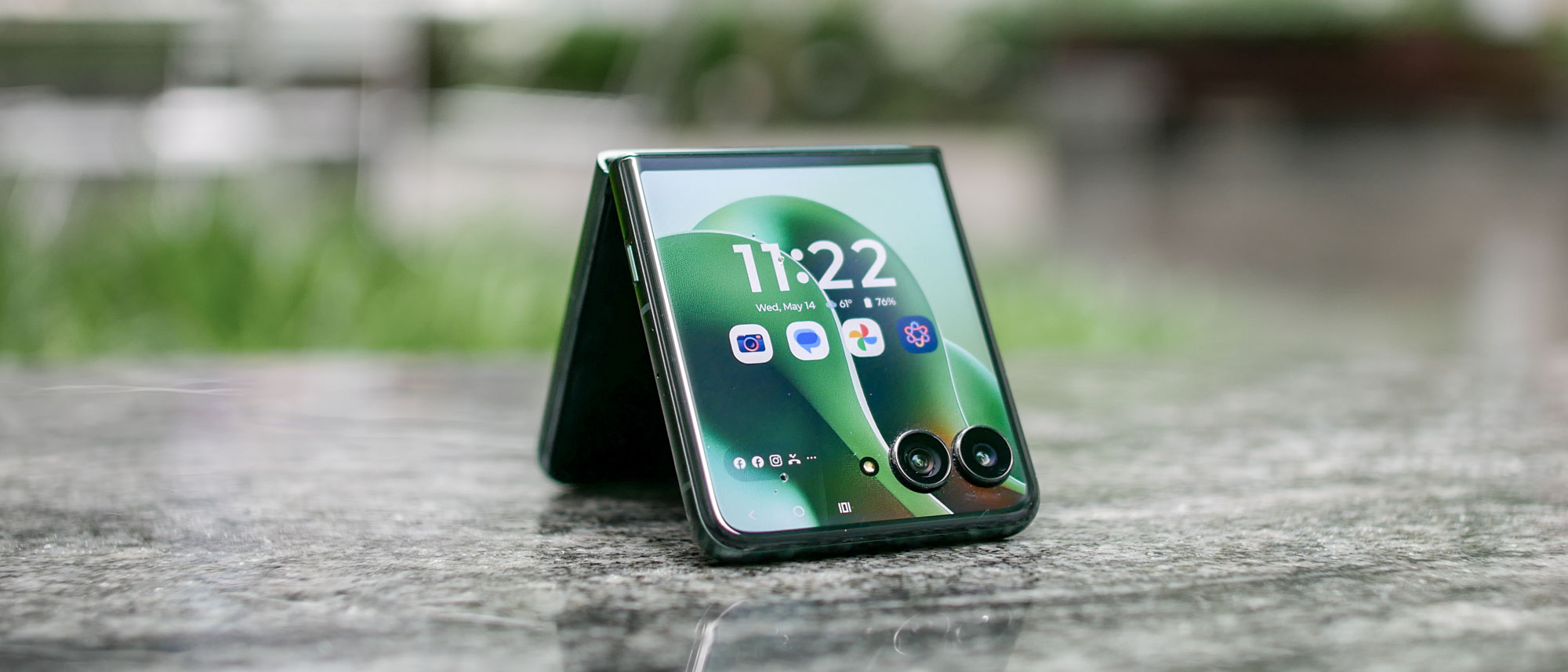Tom's Guide Verdict
Motorola injects the Razr Ultra 2025 with bigger hardware upgrades that make this flip-style phone more powerful than anything else prior to it, all while deepening its experience with Moto AI. However, this all amounts to a steeper cost.
Pros
- +
Unbelievably long battery life
- +
Class-leading chipset performance
- +
More fun colors and finishes
- +
Highly detailed macro photos
- +
Moto AI adds depth to the experience
Cons
- -
Camera performance stalls under low light
- -
3 years of software support
- -
Higher cost
Why you can trust Tom's Guide
Motorola had two back-to-back successes with Razr Plus 2023 and Razr Plus 2024, so the company’s clearly on the right path when it comes to making some of the best foldable phones around. This year, however, Motorola’s shaking up the lineup by introducing three new models — the Razr 2025, Razr Plus 2025, and Razr Ultra 2025.
The Plus is no longer the premier flagship model in the lineup, as the new Razr Ultra 2025 (known as the Razr 60 Ultra in other parts of the world) now occupies that top position, boasting a more powerful chipset, a bigger battery, more storage and RAM, a larger main display, Moto AI features out of the box and more. However, it commands a higher cost that catapults it into flagship territory alongside phones like the iPhone 16 Pro Max and Galaxy S25 Ultra.
That’s why I want to explain what kind of value this new ultra foldable offers, despite costing more, with my Motorola Razr Ultra review.
Motorola Razr Ultra 2025 review: Specifications
Motorola Razr Ultra 2025 | Motorola Razr Plus 2025 | Motorola Razr 2025 | |
Price | $1,299.99 | $999.99 | $699.99 |
Colors | Pantone Rio Red, Pantone Scarab, Pantone Mountain Trail, and Pantone Cabaret | Pantone Mocha Mousse, Midnight Blue, and Hot Pink | Pantone Spring Bud, Pantone Gibraltar Sea, Pantone Parfait Pink, and Pantone Lightest Sky |
Inner display | 7-inch AMOLED, up to 165 Hz | 6.9-inch FHD+ (2640 x 1080) pOLED, up to 165 Hz | 6.9-inch FHD+ AMOLED, up to 165 Hz |
Outer display | 4-inch pOLED, up to 165 Hz | 4-inch pOLED, up to 165 Hz | 3.6-inch pOLED, up to 90 Hz |
Rear camera | 50MP main (f/1.8), 50MP ultrawide (f/2) | 50MP main (f/1.7), 50MP telephoto (f/2) with 2x optical zoom | 50MP main (f/1.7), 13MP ultrawide (f/2.2) |
Front camera | 50MP (f/2) | 32MP (f/2.4) | 32MP (f/2.4) |
Chipset | Snapdragon 8 Elite | Snapdragon 8s Gen 3 | MediaTek Dimensity 7400X |
RAM | 16GB | 12GB | 8GB |
Storage | 512GB | 256GB | 256GB |
Battery | 4,700 mAh | 4,000 mAh | 4,500 mAh |
Wired charging | 68W | 45W | 30W |
Wireless charging | 30W | 15W | 15W |
Dimensions | 2.91 x 6.75 x 0.28 inches (open), 2.91 x 3.47 x 0.62 inches (closed) | 2.91 x 6.74 x 0.27 inches (open), 2.91 x 3.47 x 0.60 inches (closed) | 2.91 x 6.74 x 0.29 inches (open), 2.91 x 3.47 x 0.62 inches (closed) |
Weight | 7.02 ounces | 6.67 ounces | 6.63 ounces |
Motorola Razr Ultra 2025 review: Price and release

With the new moniker, it’s no surprise that the Ultra ups the ante with its higher $1,299 starting cost. That’s a premium of $300 over the Razr Plus 2024, and puts the Razr Ultra firmly into the flagship phone category. I won’t say yet if the higher price point is valid, but just know that it has double the storage of the Plus at 512GB, more RAM, a bigger 4,700 mAh battery, a premium chipset, and faster charging speeds.
Additionally, it’s really nice that you have more color/finish options to choose from this time. You get a choice between Pantone Rio Red, Pantone Mountain Trail, Pantone Cabaret, and Pantone Scarab. I’ve got the latter, which features a suede-like Alcantara finish. While some would argue this is the most premium option of the bunch, I prefer the Pantone Mountain Trail version with its wooden finish.
Regardless, the Motorola Razr Ultra 2025, along with the rest of the line-up, is officially on sale starting today, May 15.
Motorola Razr Ultra 2025 review: Design
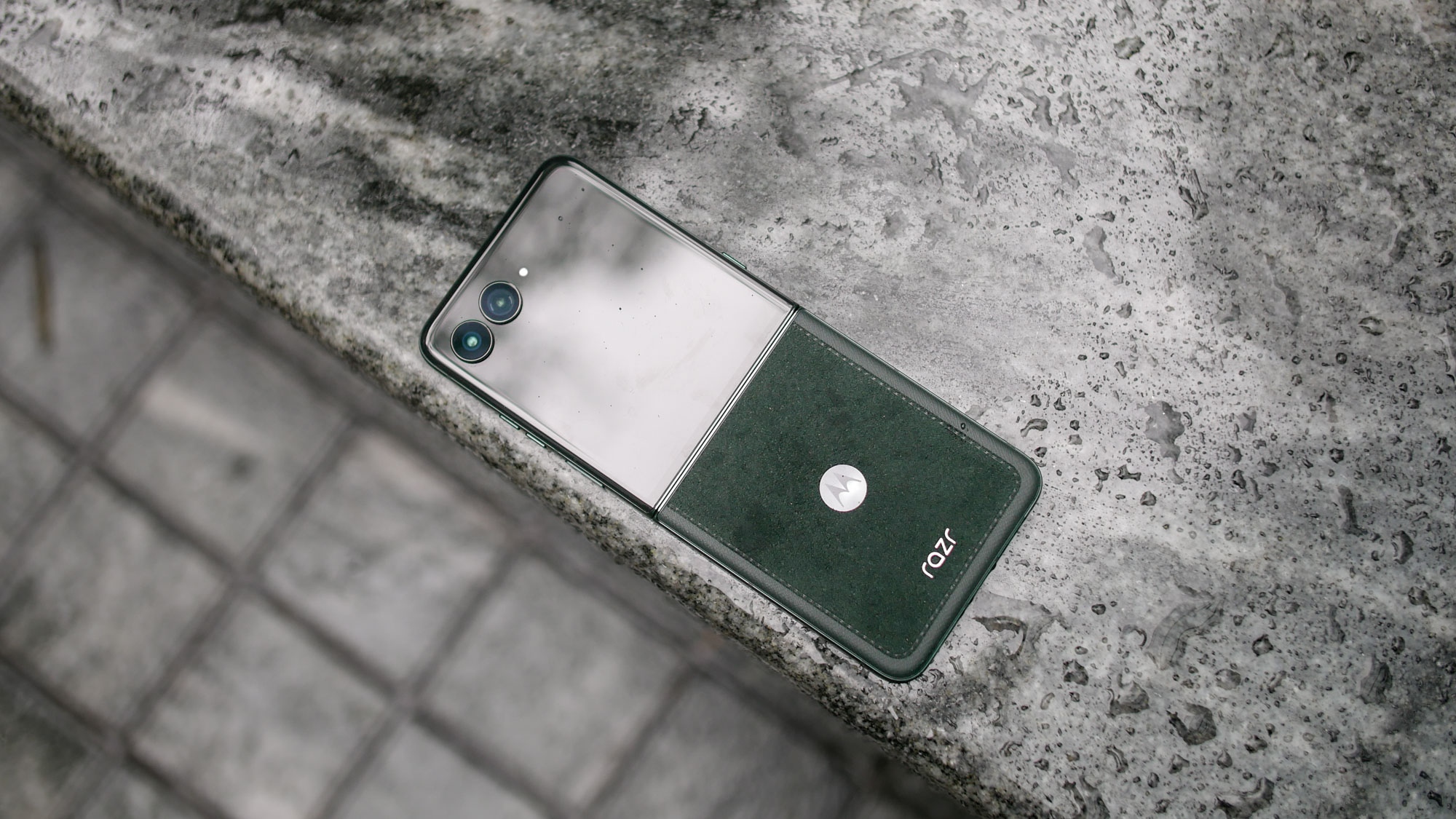
I really like the snappier response of the hinge, which is not as stiff as last year’s Razr Plus 2024.
Motorola hasn't made any drastic changes with the design of the Razr Ultra 2025, since it bears many of the same design aesthetics as last year’s Razr Plus 2024. For a flip-style phone, it’s still a charming design with its thin construction, although it’s a touch thicker, wider, and heavier than its sibling in the Razr Plus 2025.
Get instant access to breaking news, the hottest reviews, great deals and helpful tips.
The hinge, though, feels more substantial because it’s reinforced with titanium. In addition to the gapless design as before, the crease in the middle of the display isn’t as deep as before — even if it’s still visible at just the right angle. More importantly, I really like the snappier response of the hinge, which is not as stiff as last year’s Razr Plus 2024.
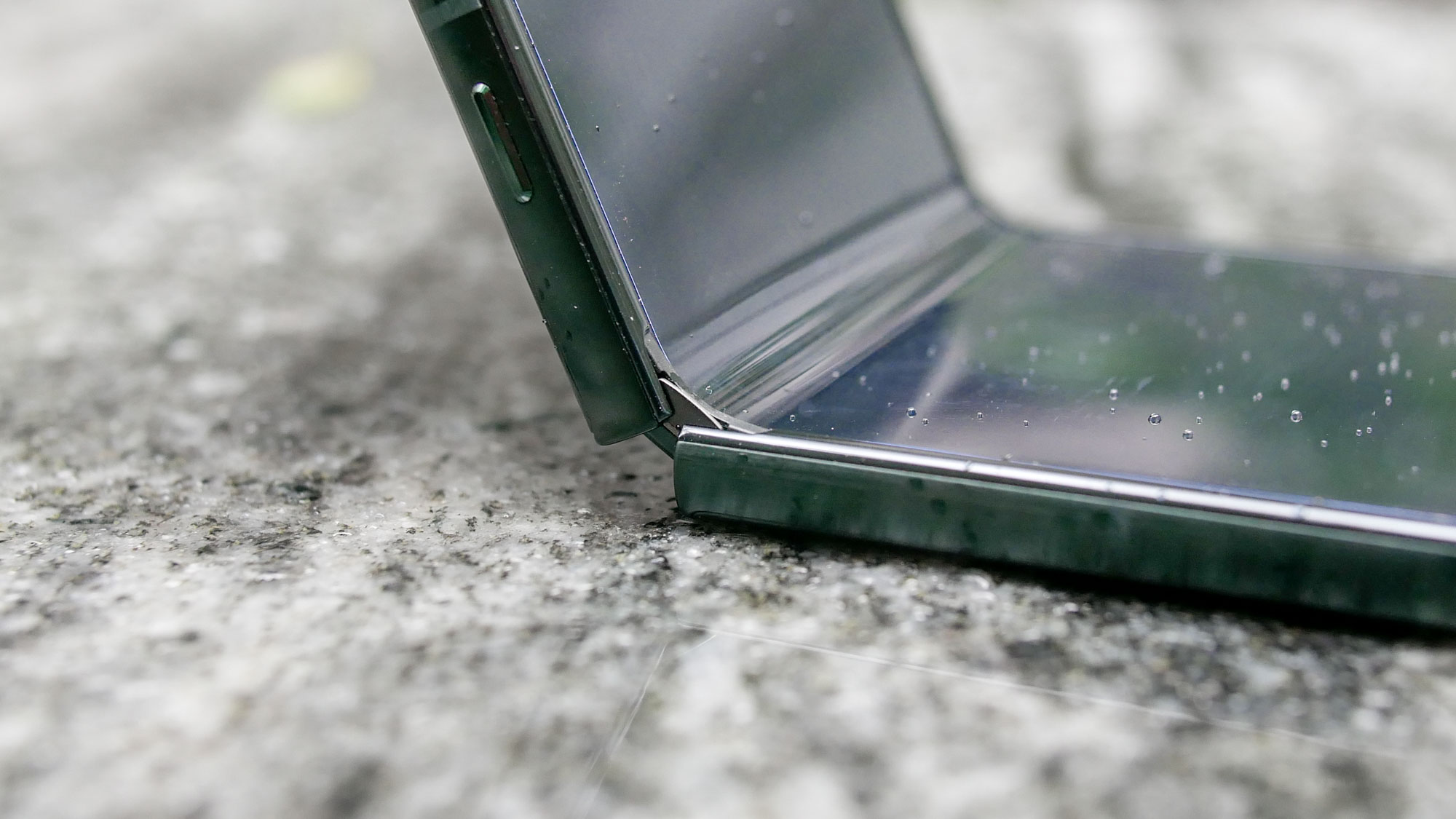
For a phone that folds, it still feels incredibly sturdy, which is backed up by its IP48-rated construction. But I’m not confident that the Alcantara will hold up as well as some of the other finishes. Not only do I worry about it staining, but I also wonder if it’ll fade with frequent wireless charging. Apart from the new finishes, the only other design change involves the addition of the AI key on the left side of the phone.
While the design remains largely unchanged, the new hinge design and additional finishes continue to make it charming amongst foldables.
Motorola Razr Ultra 2025 review: Display
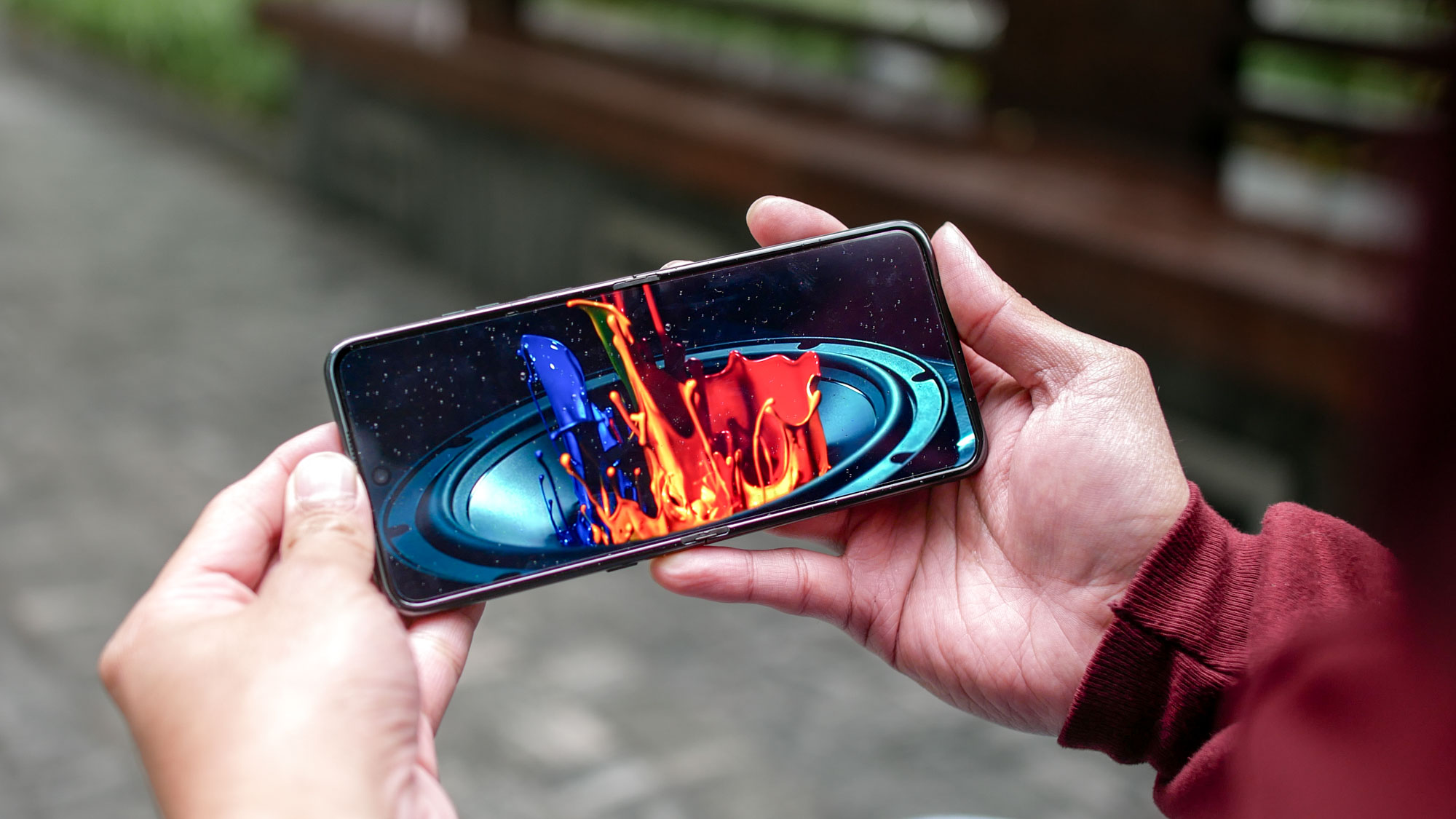
It’s a minor size upgrade in my opinion, but the Razr Ultra 2025 now packs a 7-inch Super HD (2992 x 1224) AMOLED display. That’s a mere 0.1-inch increase over the display size in the Razr Plus 2024 and 2025.
First of all, I will say it’s a good-looking display complete with wide viewing angles, bright colors, and tons of detail. And while the 22:9 aspect ratio doesn’t interfere with how I generally use the phone, it does sort of make the video watching experience a bit odd — largely in part to how standard 16:9 videos have gaps on the left and right sides. I could perform a zoom to get videos to fill the entire screen, but then it crops a lot of the top and bottom.
| Row 0 - Cell 0 | Motorola Razr Ultra 2025 | Motorola Razr Plus 2024 | Samsung Galaxy Z Flip 6 |
Screen size | 7 inches | 6.9 inches | 6.7 inches |
Brightness (nits) | 1,835 | 2,158 | 1,942 |
sRGB % | 214.3 (Vivid), 123.2 (Natural) | 98.1% (Natural) | 135.8 (Vivid) / 119.9 (Natural) |
DCI-P3 % | 151.8 (Vivid) / 123.2 (Natural) | 69.5% (Natural) | 96.2 (Vivid) / 84.9 (Natural) |
Delta-E score (closer to zero is better) | 0.33 (Vivid) / 0.26 (Natural) | 0.23 (Natural) | 0.24 (Vivid) / 0.24 (Natural) |
Thankfully, it’s still brilliant looking with its peak brightness output of 1,835 nits. This actually comes up short compared to the record-setting mark of 2,158 nits achieved by the Razr Plus 2024, but it’s still incredibly bright by today’s standards. In fact, few phones have exceeded 2,000 nits in our labs testing.
On the outside, it still features a 4.0-inch pOLED display with a resolution of 1272 x 1080 pixels. It’s sharp and detailed, and allowed me to better use the phone one-handed, due to how it can run any app in full-screen mode. I really love this, even though the camera lens can sometimes cover up parts of an app I need to access. Just as before, there are tons of personalization options and the ability to place it in one of its flex modes to access its desk display mode.
Motorola Razr Ultra 2025 review: Cameras

I wasn’t a fan of the switch Motorola made with the Razr Plus 2024, since it dropped the ultrawide camera in favor of a telephoto one with 2x optical zoom. But I’m glad that Motorola has gone back to that setup with the dual-camera setup on the Razr Ultra 2025 — which consists of a 50MP main camera paired with a 50MP ultrawide camera.
Flip phones such as this are meant for vlogging, so ultrawide cameras are valued for this exact reason when it’s paired with the outer screen for recording video. While there’s an upgraded 50MP selfie camera embedded into the main display, I still love being able to use the better rear cameras paired with the outer screen. This makes selfies and vlogging much easier.
Content creators will enjoy the number of camera modes available with the Razr Ultra 2025, including new additions like Group Shot, which basically takes a burst of images and blends the best faces for that picture-perfect shot. As much as I like using Pro mode to tweak the camera settings to my liking, it’s only for photos and not video. Plus, it’s missing a portrait video mode that other similar priced phones offer.
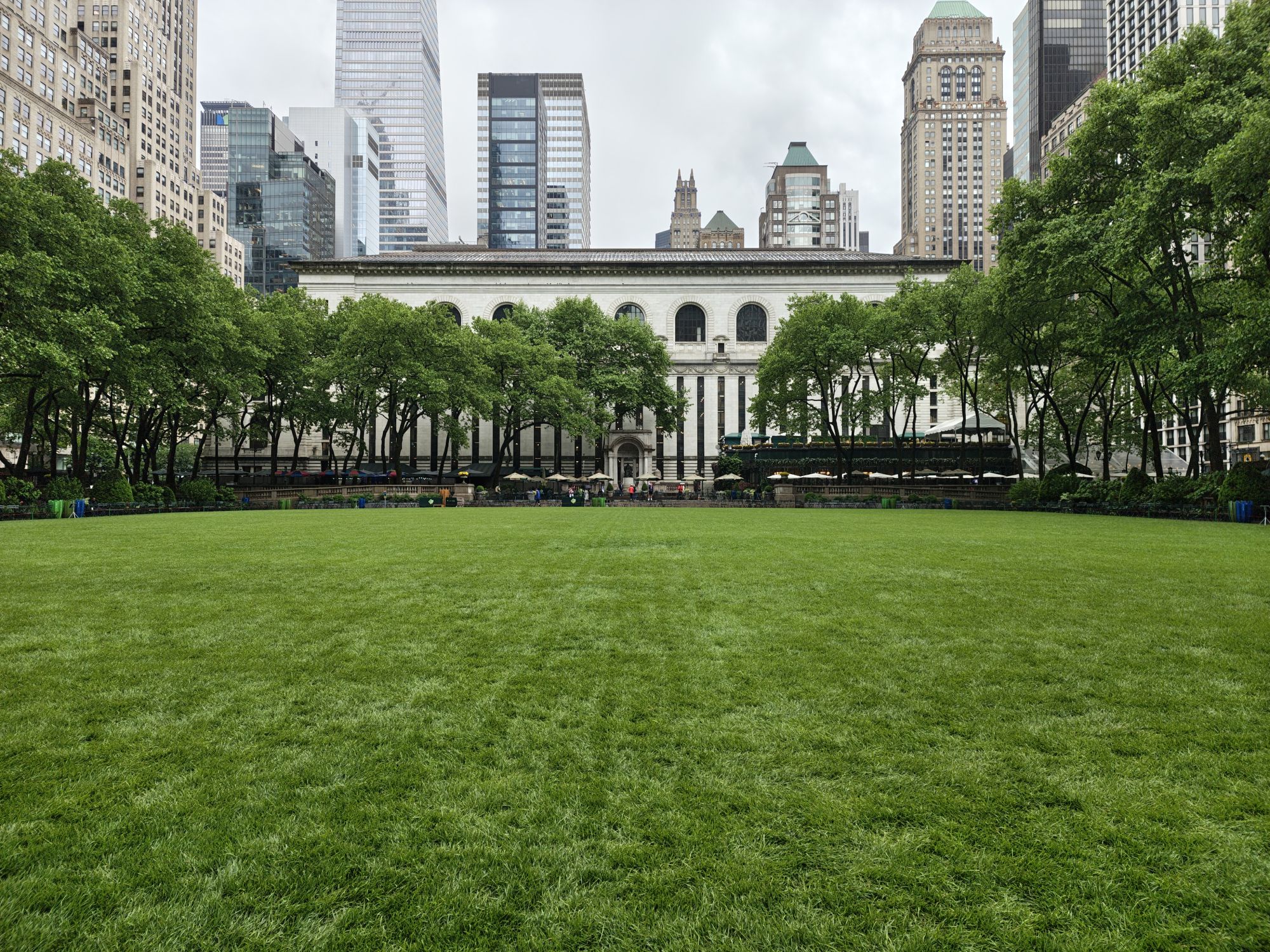

Against last year’s Razr Plus 2024, which also packs a 50MP main camera, the only big difference I can tell from the shot I captured from Bryant Park in New York City is how they capture colors. The Razr Plus 2024 boosts the saturation, which makes it look overprocessed versus the more realistic tones of the Razr Ultra 2025. Details look identical with both phones, like the brickwork of the back of the New York Post Office.


Speaking of colors, it’s clear that the Razr Ultra 2025 tones down the saturation — especially with the red peppers. There’s noticeable color bleeding with those same red peppers with the Razr Plus 2024’s shot.


I snapped over a handful of selfies with the Razr Ultra 2025, but they look softer than the ones from the Razr Plus 2024. Not only are my facial features more defined with the Razr Plus 2024, but the fabric of my hoodie has much more detail and definition.






Motorola might’ve dropped the telephoto camera from its arsenal, but the Razr Ultra 2025 can still deliver effective zooming with its main camera. The photos above are captured at 2x, 4x, and 30x zoom to illustrate its zooming performance against the optically enhanced zoom camera of the Razr Plus 2024.
At 2x and 4x zoom, the Razr ULtra captures just as much definition and detail all around the building as the Razr Plus 2024. Although the Razr Plus 2024 is clearer at 30x zoom, I still have to give credit to the Razr Ultra 2025 for not being too far off.


I’m also glad to find a proper macro mode with the Razr Ultra 2025, seeing as the Razr Plus 2024 lacks one. Therefore, the Ultra has an inherent advantage in this department and it shows in the close-up I captured above. I will say that the Razr Plus 2024 captures an excellent shot of the leaf, but it can’t match how close the Razr Ultra 2025 can get. There’s so much more fine detail in the Ultra’s shot that you can’t even see with the Plus.

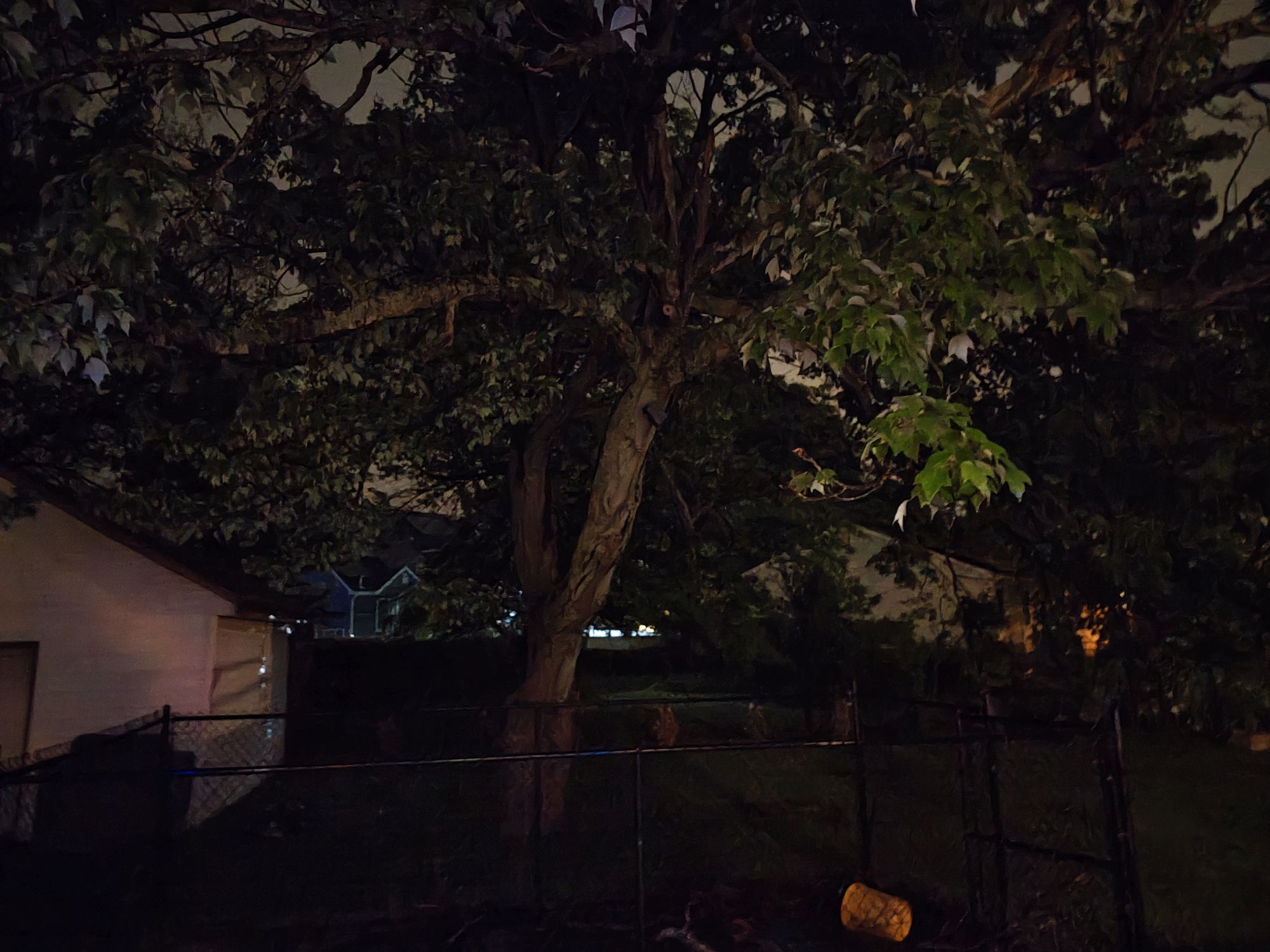
New phones tend to do better than their predecessors under low light, but that’s not the case here — and that’s a bummer! Under pitch dark settings, the Razr Ultra 2025 has a tough time establishing its focus, but it doesn’t help either that photos come out underexposed. The tree in my backyard is brighter with the Razr Plus 2024, whereas the Razr Ultra 2025 looks murky and dark.
Video recording tops out at 8K 30fps, which is a step up over the Razr Plus 2024. This gives the Ultra more depth when it comes to editing the video later on, allowing me to crop it without losing as much detail when it’s exported at 4K.
While the 4K 30fps video capture doesn’t differ too much compared to the Razr Plus 2024, I still prefer it because it’s a vlogging-friendly video camera with good stabilization and a wider capture.
Motorola Razr Ultra 2025 review: Performance
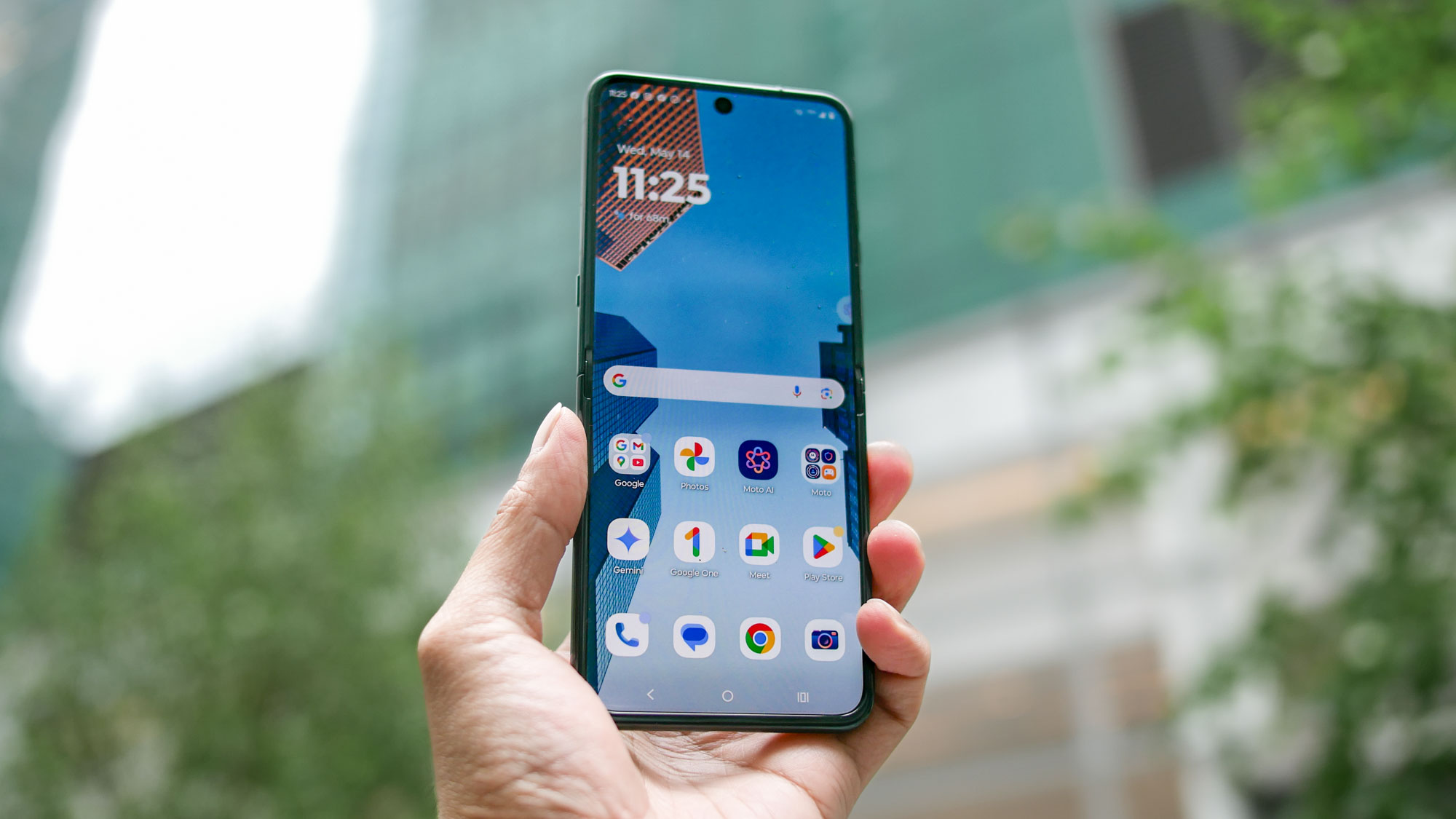
The arrival of the Razr Ultra 2025 puts Motorola into a deeper conversation with the best phones because it’s finally armed with a flagship-caliber chipset — the Snapdragon 8 Elite. I’m not surprised by how much of a difference this makes because I’ve seen the benchmark scores put up by other phones, but it definitely makes the Razr Plus 2025 the most powerful foldable phone Tom’s Guide has tested to date.
In GeekBench 6, the Snapdragon 8 Elite paired with 16GB of RAM outperforms last year’s Snapdragon 8s Gen 3-powered Razr Plus 2024 by a long way. Its single and multi-core scores of 2,719 and 8,342 respectively even manage to beat the Galaxy Z Flip 6.
| Row 0 - Cell 0 | Motorola Razr Ultra 2025 | Motorola Razr Plus 2024 | Samsung Galaxy Z Flip 6 |
Chipset | Snapdragon 8 Elite | Snapdragon 8s Gen 3 | Snapdragon 8 Gen 3 |
Geekbench 6 (single/multicore) | 2719 / 8342 | 1834 / 4848 | 2091 / 7022 |
3DMark Wild Life Unlimited (fps) | 145.32 | 73.74 | 113.4 |
Adobe Premiere Rush video transcode (Miins:Secs) | 0:59 | N/A | 0:46 |
There’s also a remarkable GPU performance boost as well, nearly doubling the frame rate that the Razr Plus 2024 achieved with 3DMark’s Wild Life Unlimited test. The 73.74 fps average frame rate pulled in by the Razr Plus 2024 isn’t too shabby, but the Razr Ultra managed 145.32 fps running the same test.
This all translates to an exceptional performance, no matter what I do or run on the phone. Scrolling through the interface is also buttery smooth, thanks in part to its adaptive 165Hz refresh rate — which gives animations that extra fluid look. Games run really well, too, including when I play them in full-screen mode with the outer screen. All of this just shows how much of a leap it is over last year’s Razr Plus 2024.
Motorola Razr Ultra 2025 review: Software and AI
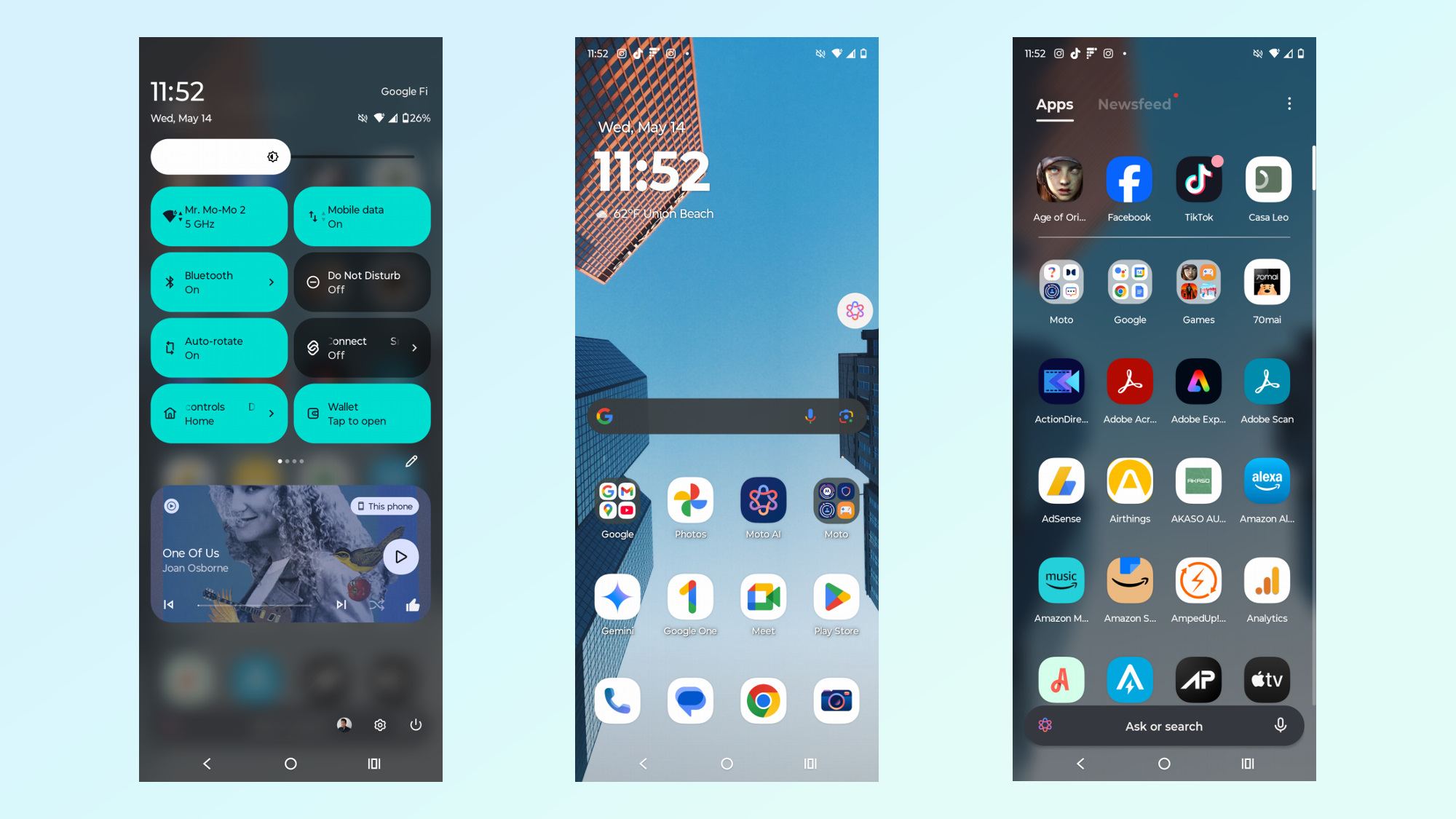
Software plays a critical role in giving the Razr Ultra 2025 much more value, mainly due to how it’s offering several AI features out of the box. Moto’s custom UI is running on top of Android 15, but it’s amplified by how it integrates Moto AI and other AI assistants into the mix.
Before I get into that, I will say that the Razr Ultra 2025 has a lot of utility when it comes to being productive. In addition to being able to run two apps simultaneously on the main display, I really appreciate how it’s one of the few phones I can comfortably use one-handed — thanks in part to how the outer screen can run just about any app. I might be in the minority when it comes to seeing this as a huge benefit, but it's hard to describe just how helpful it is.

There’s also Smart Connect, which offers an intuitive desktop-like experience that also seamlessly works with other devices. Essentially, it’s Motorola’s version of Samsung DeX — but it works entirely through a wireless connection. From being able to access apps and files stored on the Razr Ultra 2025, Smart Connect can even allow me to cast a virtual version of the phone on my Windows 11 laptop. This is all fantastic, but I just wish it could work through USB-C as opposed to doing it just wirelessly. With a wired option, I would be able to directly connect my Xreal AR glasses to it for an even better experience.
I’m even happier to see that Motorola’s in the AI race now because Moto AI is available right from the start. The company’s been working on this for a while now, starting off as a beta with the Razr models last year and finally revealing it in full here. Some of the Moto AI tools can be quickly launched by pressing the dedicated AI key on the side of the phone, but the full suite is accessible by running the dedicated Moto AI app.

These Moto AI tools consist of Catch Me Up, Pay Attention, and Remember This. Catch Me Up uses AI to give me a helpful summary of my notifications, Pay Attention is a voice recorder that will transcribe and summarize recordings, and Remember This allows me to save screenshots, photos, and more for me to recall later.
Over on the creative side, I really like the suite of tools that Moto AI offers — which is more or less the same stuff I’ve seen with Apple Intelligence, Galaxy AI, and Google AI. For example, Image Studio lets me generate images through a text prompt, which I’m happy to say manages to create realistic images when I asked it to generate ‘teenage mutant ninja turtles fighting black cats.' Meanwhile, Sketch To Image uses AI to take my crude drawings and generate finer, more detailed images.




However, many of the other AI-assisted photo editing tools I’ve come to use aren't handled by Moto AI at all. Instead, it leans on Google Photos to perform tasks such as removing unwanted subjects and reimaging images. Likewise, it also incorporates Google Gemini and Perplexity to perform more advanced requests — but you only have access to them for 3 months, which you’ll then need to pay subscriptions to continue accessing their advanced features.
I will give Motorola credit for bringing these AI tools and assistants to the Razr Ultra 2025, but it’s playing catch-up. For example, it doesn’t create richer document outlines and summaries with Pay Attention as I’ve seen with Note Assist with the Galaxy S25 — nor does it have anything remotely close to the Call Screen function of the Pixel 9.
Despite this, it’s a good starting point for keeping the Razr Ultra 2025 in the game when it comes to AI features. It just needs more of them at this point to match the utility that its rivals offer. At the same time, I’m disappointed that Motorola still keeps to 3 years of software support — which is laughably short compared to other phones.
Motorola Razr Ultra 2025 review: Battery
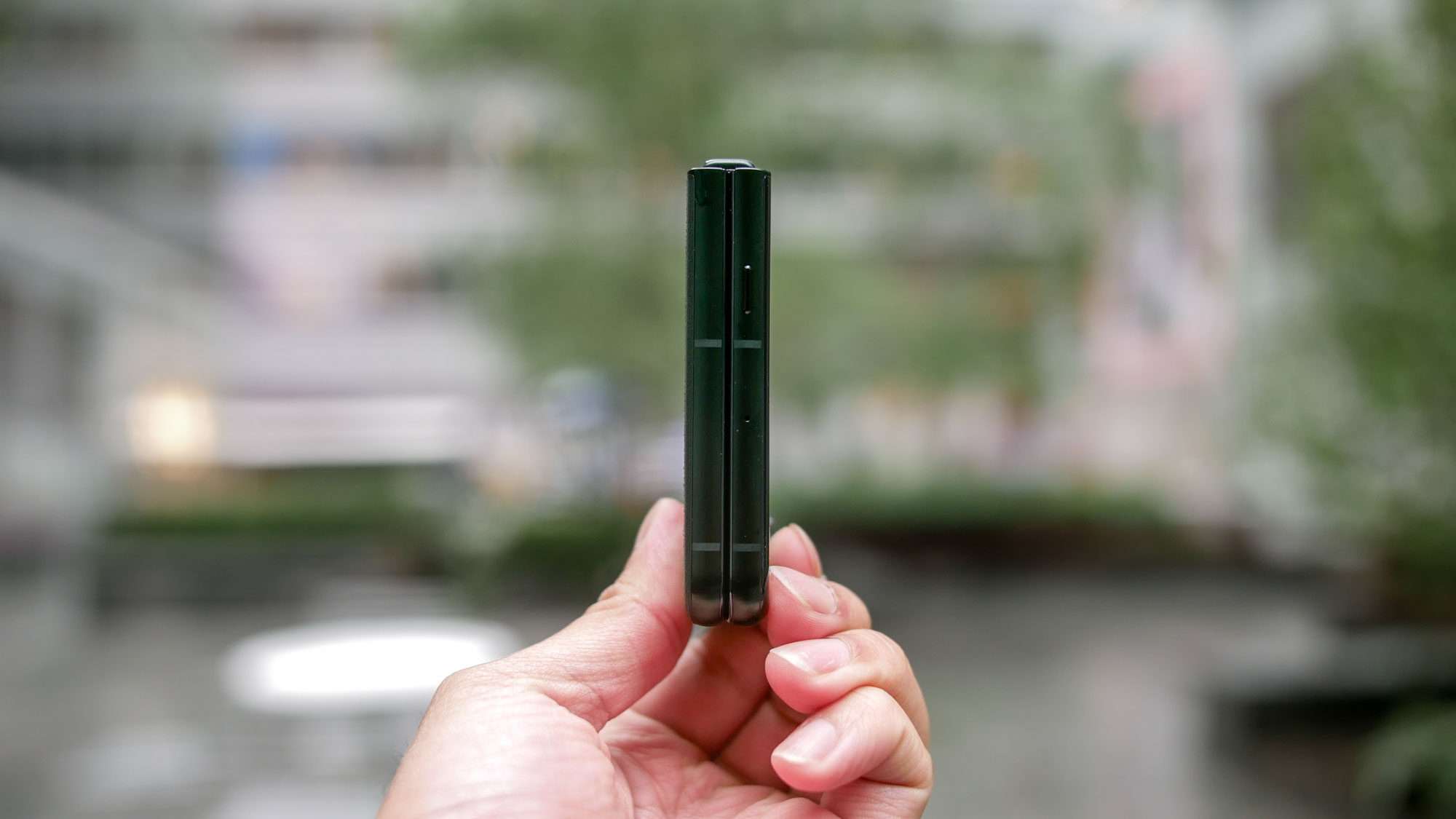
Honestly, it’s hard to believe that there’s a 4,700 mAh battery inside of the Razr Ultra 2025 because its overall size isn’t that much different from the Razr Plus 2024. Paired with the power efficiency of the Snapdragon 8 Elite, the Razr Ultra 2025 reaches new heights with its battery endurance.
Average Battery life (Hrs:Mins) | Charging % in 15 minutes | Charging % in 30 minutes | |
Motorola Razr Ultra 2025 | 15:42 | 40% | 72% |
Motorola Razr Plus 2024 | 14:13 | 27% | 48% |
Samsung Galaxy Z Flip 6 | 11:01 | 27% | 55% |
Not only is it the most powerful foldable phone that has gone through the Tom’s Guide labs, but it’s also the longest lasting battery in a foldable as well. There’s just no comparison here because it blows away the Razr Plus 2024 and Galaxy Z Flip 6 with its remarkable time of 18 hours and 57 minutes. However, it only achieves that mark with the refresh rate set to Efficiency First mode. Out of the box it's set to Smart and Balanced mode, reaching a time of 15 hours and 42 minutes running the same test. The default battery performance still lands the Razr Ultra 2025 in our best phone battery life guide.
In my day-to-day use, I’m also pleased to see that it’s making a huge difference because for a phone of its size, it easily carries me through an entire day without the need to charge. Luckily, it also gets an upgrade with its 45W wired charging, which gets its to 40% capacity in 15 minutes of charging. That goes up to 72% after 30 minutes of charging.
Motorola Razr Ultra 2025 review: Verdict

I’ve yet to commit long term to using a flip-style phone, but the Motorola Razr Ultra 2025 is making a strong case to make me ditch my Galaxy Z Fold 6. That’s because this compact, ultra sleek foldable phone is turbocharged in nearly every way over last year’s Razr Plus 2024. Like I’ve said already, it’s the most powerful and longest lasting foldable phone I’ve come across.
On another note, I also love how it goes back to a main and ultrawide camera setup — which is a powerful combo for creators. I just wish there were more video-centric modes to really make more use out of it. At the same time, the new Moto AI features help to diversify its experience, but it doesn’t come close to matching the robust set offered by the Galaxy Z Flip 6. There’s definitely still a lot more that Motorola could do to bring it to the same level, but it’s not here in this current iteration.
Most of all I’m torn about the higher cost, it’s a big step up over past models and sets a precedent for everything else. Price increases are inevitable, but this is just a bigger jump than what I anticipate shelling out for a flip-style phone. It’s not perfect, but the Razr Ultra 2025 is steering in the correct direction by entering the AI conversation — all while making marked improvements just about everywhere.
More from Tom's Guide
- I have big concerns about the iPhone 17 Air's design — here's why
- Google Messages is getting 5 new security features to help protect you from scams and other threats
- Samsung Galaxy S25 FE tipped for a hardware letdown — fans won't like this

John’s a senior editor covering phones for Tom’s Guide. He’s no stranger in this area having covered mobile phones and gadgets since 2008 when he started his career. On top of his editor duties, he’s a seasoned videographer being in front and behind the camera producing YouTube videos. Previously, he held editor roles with PhoneArena, Android Authority, Digital Trends, and SPY. Outside of tech, he enjoys producing mini documentaries and fun social clips for small businesses, enjoying the beach life at the Jersey Shore, and recently becoming a first time homeowner.
You must confirm your public display name before commenting
Please logout and then login again, you will then be prompted to enter your display name.
